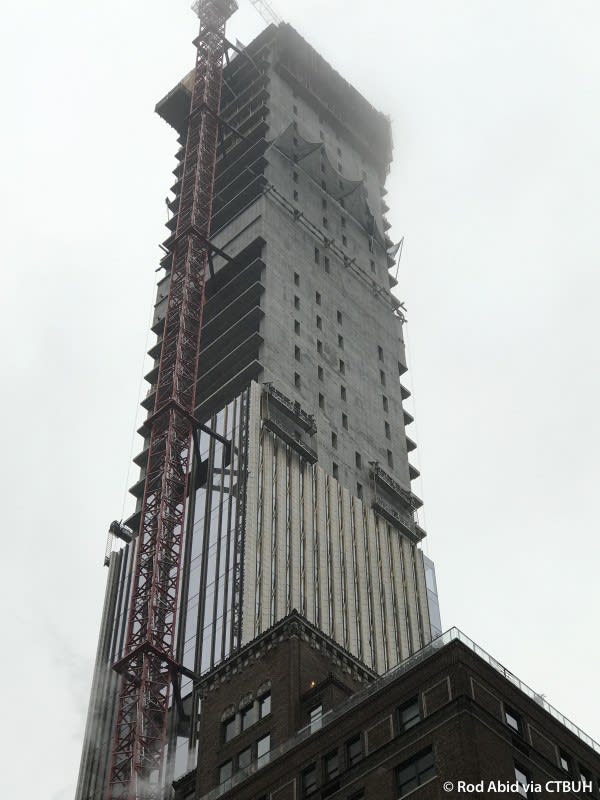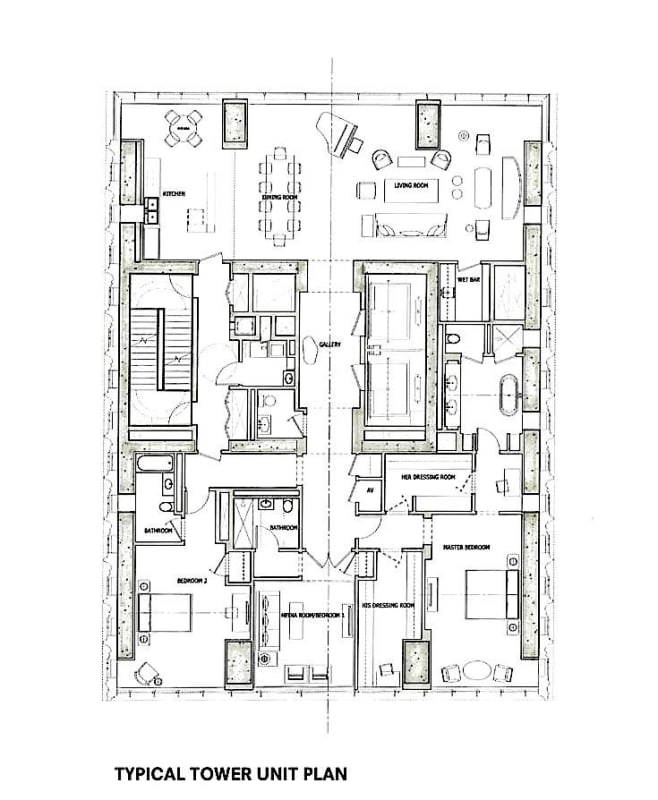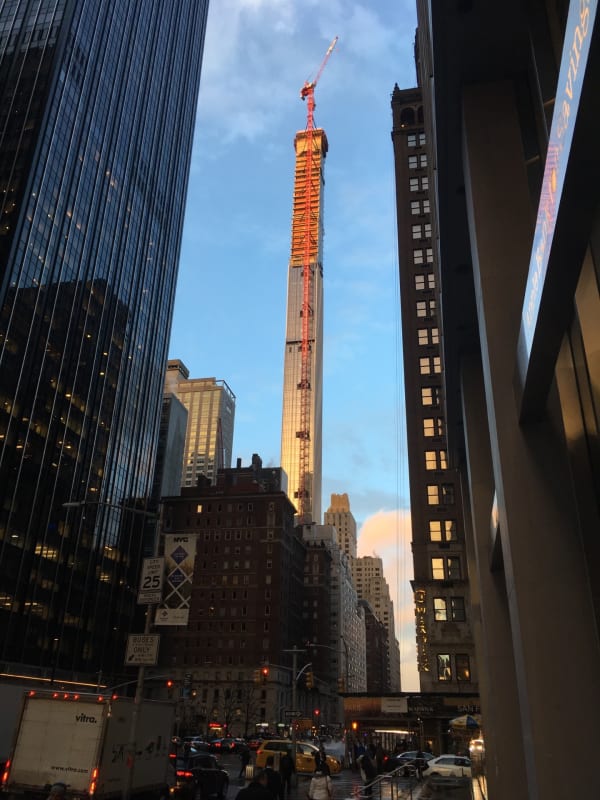kissymouse said:
How in the world is this possible?
Mostly by way of insanely high property values.
I have a friend in NYC who participates in high-rise design there, albeit not quite at that scale these days. He's graciously allowed me to participate in his work around the margins which has afforded me a fascinating glimpse into that market. I make the following observations:
1) Buildings this tall use their full width structurally as opposed to more conventional buildings where the structural width is really the width of the elevator shaft or the braced frames etc. Here, I believe that it's full width, perforated shear walls in one direction, as you mentioned, and those same walls used as outriggers in the other direction.
2) At the end of the day, a building like this is just a cantilever beam not exposed to all that much load (wind on it's own surfaces). Using the full width structurally, and throwing in some damping tech for occupant comfort, 1:24 isn't
that much of a stretch when you think about it.
3) I've seen some of the unit floor plans for the building. The square footage of any one floor is disproportionately made up of monstrously thick shear walls. It almost looks oppressive in a way. On some visceral level, I'd have to think that you'd notice that the door jamb separating your kitchen from your stair shaft is 3' thick. Although, as you can see below, they clearly employ some clever architectural tricks to mitigate this. Losing this much floor space to walls is obviously only palatable in a market where insanely high property values can justify it.
4) A critical consideration for such a slender building is being able to successfully staple the damn thing to the ground convincingly. They seem to use a lot of very high capacity tension piles embedded into the bedrock that underlies the area.
Very high capacity piles using central, high strength "rebar" to the tune of 4" in diameter. At that size, the bars are pretty much columns in their on right rather than reinforcing. These piles may cost upwards of $50K a piece. So, again, this is only palatable in a market where insanely high property values can justify that. I shudder to think that my own home, taken in its entirety, is probably only worth half a dozen of the piles under a skyscraper.
5) The engineering is sophisticated but probably not nearly so much so as you'd anticipate. A lot of it seems to just amount to being
super aggressive with respect to design assumptions etc. The part of this that worries me a bit is that there seems to be very little standardization or code guidance to govern the lateral design of these types of buildings. You've got a gaggle of highly competitive envelope pushers all competing vigorously for these jobs and constantly feeling one another out to ascertain where the bar design of acceptability is located this month as opposed to last. It makes NYC a difficult market in which to practice and, ethically, it's hard to imagine how such a setup doesn't ultimately culminate in some problems. Thankfully, NYC does seem to have a fairly robust peer review system in place for major buildings.








